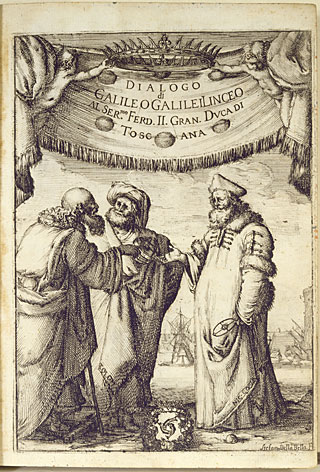A handsome new, illustrated edition of Galileo's great Dialogue on the Two Chief Systems of the World will be published in June, and I was invited to write an introduction.

Of course I accepted. I like introducing other people's books. It's something I've done perhaps half a dozen times in my life, though never for anyone so revered or so long dead. Yesterday (February 15) was Galileo's 449th birthday; January 8 marked the 371st anniversary of his death.
The Dialogue -- or Dialogo in the original Italian -- is nearing four hundred years in print. Having spent its first two centuries in a state of suspended animation on the Index of Prohibited Books, it remains evergreen. A reviewer's note in the mid-February 2013 double issue of The New Yorker called Galileo's Dialogue "the most entertaining classic of science ever published."
Others have shared that opinion, including Albert Einstein, who wrote the Foreword for the 1953 English translation by the late Stillman Drake. Einstein judged the Dialogue "a downright roguish attempt" to pretend obedience to authority while in fact flouting it: "A man is here revealed who possesses the passionate will, the intelligence, and the courage to stand up as the representative of rational thinking against the host of those who, relying on the ignorance of the people and the indolence of teachers in priest's and scholar's garb, maintain and defend their positions of authority."
Re-reading the Dialogue and retracing its tragic history for my current assignment, I reflected that I will never be asked to perform a similar service for Copernicus. Unlike Galileo, who functioned as the Carl Sagan of his day, Copernicus spoke to a small community of intellectuals who could read Latin and follow his math. Although his book, On the Revolutions of the Heavenly Spheres, inspired Galileo and fomented a scientific revolution, one could never call it a page-turner.
